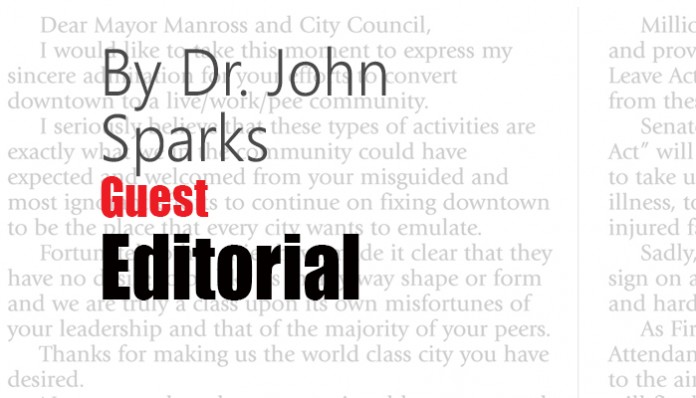Millennials are among the most avid supporters of the socialism promoted by Bernie Sanders. What is most remarkable is that there is ample evidence that socialist regimes bring untold economic harm to the very citizens who initially support them. My prior article on socialism in Venezuela discussed price controls and the life-threatening shortages that such controls bring. The other disastrous policy which socialist Venezuela has embraced is inflation of its money supply. Sadly, inflation is like taking a drug, its use requires larger and larger doses to produce the desired effect. Venezuela is now spiraling downward toward a hyper-inflationary overdose.
What is it like for Venezuelans seeking to purchase essentials such as food, medicine, and the like? In 2015 it was bad. If a half-kilo of rice cost 10 BsF (Bolivars) at the beginning of the year, by year end—due to inflation—the price had risen to 28.60 BsF or an increase of 186 percent. However, that understates the inflation because 186 percent inflation is the “official” governmental rate. In actuality, the price would probably have risen more like 400 percent in a single year. The International Monetary Fund is predicting price inflation for 2016 of an astounding 720 percent. What accounts for this terrifyingly fast deterioration of the Bolivar under the socialist Venezuelan administration?
Though it may seem unconnected, the present currency crisis began with a decade and a half of typical socialist policies under Hugo Chavez in which he stressed the “redistribution of wealth” and large social programs of public expenditures called, in Spanish, “misiones.” Using these programs, Chavez directed public revenues into ambitious efforts to help the poor and, as commentators readily admit, to buy votes in order to guarantee the perpetuation of his socialist regime. At first, the burden on ordinary Venezuelans was hidden because the government could finance these programs with the revenues produced by taxing oil production. That revenue stream seemed unending with world oil prices per barrel reaching $140 per barrel in 2008. However, in that same year, oil prices fell precipitously to under $40 per barrel. There was some recovery after 2008. And yet, again in 2014, oil prices dropped to the $40 a barrel range. Low oil prices meant that Venezuelan government revenues took a considerable hit. With income taxes and other taxes relatively high, Venezuela did what socialist governments always eventually do when it comes time to pay for social programs: Print money. The money supply, what economists call M1, more than doubled in a 15-month period from January 2015 to April 2016. And there is no sign of let up by the Maduro administration.
What are the results of such monetary profligacy? First, the value of the Bolivar dove downward. This decline in value meant that it took more and more of the depreciating currency to purchase the same goods. For example, in a single month (February 2016) the Bolivar declined in value at the rate of 16.9 percent. Consequently, Venezuelans who must use or hold Bolivars for day to day transactions suffer a cruel inflation “tax.” Worse yet, citizens who have savings in the form of Bolivars have the value that was once there effectively confiscated by the inflationary policies. Furthermore, the unpredictability of the value of Bolivars leads to bartering, that is, avoiding the use of a medium of exchange by trading one good or service for another. Although this is being made more workable in Venezuela by the use of Facebook and Twitter accounts, the practice is still costly and inefficient.
Unstable money makes business calculations extremely difficult. Depreciating currency falsifies the signals—costs, prices, profits—upon which producers rely to determine whether the production of certain goods is economic or uneconomic. Consequently, in a period of runaway inflation, businesses may undertake production projects that would not be justified if they knew the true condition of prices and profits and, on the other hand, they may forego projects that should be undertaken but which seem uneconomical.
Inflation also helps to create shortages. Suppliers of goods, such as foreign pharmaceutical firms, for example, are refusing to sell much needed medical supplies and equipment into Venezuela unless they are paid with the dollar. They want no part of the risk they would have to take if they accepted the declining Bolivars as payment for goods. Since most medical goods are imported, this effectively makes it nearly impossible for hospitals to provide basic care.
Has Venezuela entered into the final phase of monetary destruction, namely: hyper-inflation? Using the measurement adopted by economist Phillip Cagan, a country does not “qualify” as hyper-inflating unless the currency value is regularly declining at the rate of a least 50 percent per month. The most recent hyper-inflation conducted by a socialist country was Zimbabwe (2007-2008) where the Zimbabwe dollar, before it completely collapsed, was experiencing inflation at the rate of 98 percent per day. Venezuelans are not there yet, but they are close to the point at which they would give up Bolivars for almost any other good.
Ironically, when Chavez introduced a new Bolivar in 2008, in typical socialist-speak, he called it the “Bolivar Fuerte” which literally means the “strong Bolivar.” Unless the government puts the brakes on its policy of printing, the Bolivar Fuerte will soon become the “Bolivar Muerto”, that is, the dead Bolivar.
Dr. John A. Sparks is the retired dean of Arts & Letters at Grove City College and a fellow for The Center for Vision & Values. He is a graduate of the University of Michigan Law School and a member of the State Bar of Pennsylvania. He is a frequent contributor of articles based upon U.S. Supreme Court developments.





